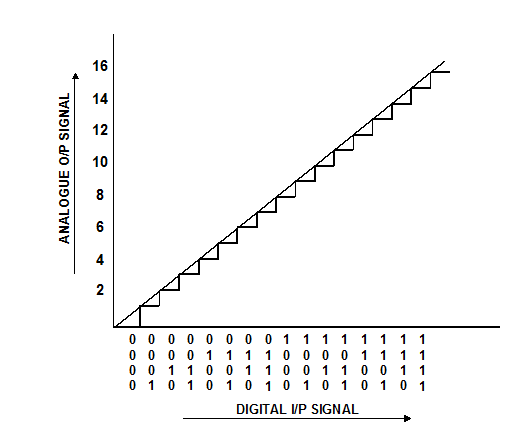Digital to analogue conversion (dac):
Since many systems used on aircraft will require outputs in analogue form, it will be necessary to be able to convert the digital information back into analogue.
The input to the DAC is effectively a number, usually binary coded. This number must be converted to a corresponding number of units of voltage (or current) by the DAC.
The output of the DAC will thus be stepped as the digital input changes, taking on a series of discrete values. The spacing between these values (quantisation levels) will depend on the length of the input digital word and the maximum range of the output voltage. For example, a DAC, which can provide an output voltage of between 0 and 16 volts, will, with 4-bit word input, have 1 volt between quantisation levels and is illustrated in Figure.

Similarly, an output voltage range of 0 to 10 volts with 10-bit word input will give spacing between quantisation levels of approximately 0.01 volts. The stepped nature of the output can of course be smoothed.
To change a digital word into an analogue signal we require a circuit capable of carrying out this function. One method would be to apply the digital word to a corresponding number of resistors (4-bit word - 4 resistors), connected as a potential divider. Figure 9 shows a circuit that would carry out the function of Digital to Analogue conversion.
